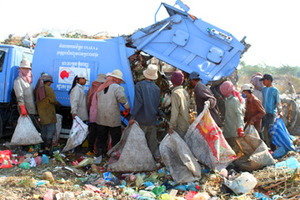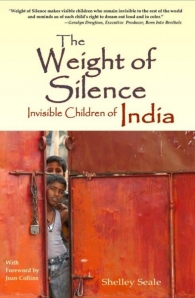by Andrea Gross; photos by Irv Green
I'm standing in Stung Meanchy, Cambodia's largest garbage dump. The stench is overwhelming, the grit from burned ash covers every inch of my body, and I'm wondering if I made a mistake by forcing everyone in our group to come here.
 After all, we'd seen plenty of poverty just driving around the streets of Phnom Penh. We'd even visited the killing fields, where we saw a stupa filled with skulls, a reminder of the more than 200,000 people who were murdered by the Khmer Rouge just thirty years ago. We knew the country was desperately poor, that the people were still too traumatized to rebuild their society.
After all, we'd seen plenty of poverty just driving around the streets of Phnom Penh. We'd even visited the killing fields, where we saw a stupa filled with skulls, a reminder of the more than 200,000 people who were murdered by the Khmer Rouge just thirty years ago. We knew the country was desperately poor, that the people were still too traumatized to rebuild their society.
Did we really need to tour a slum?
But I persisted. Why? Because friends of mine had started a project to rescue children from these slums. I’d seen their photos of Stung Meanchy, and I’d had a hard time believing the horror they depicted.
Now I realize that photographs can’t possibly convey the reality before me. They can’t reproduce the smell of rotting garbage and dead animals; they can’t convey feel of the gravelly particles that swirl around me, making their way, with every breath I take, into my nose, my mouth, my lungs.
Our bus driver hands me a mask. In theory, this will protect me from... from what? I'm afraid to ask. And as I look at the people around me — maskless in the putrid air — I'm embarrassed to put it on.
Men and women — most of whom look very old, although they're probably not — are sorting through the rubble in hopes of finding pieces of plastic or metal that they can sell. On a good day, they earn the equivalent of 50 cents. There aren't a lot of good days.
I take a few tentative steps and see a pile of discarded needles. I pray I won't step on one, pray that the barefoot children who are staring at me won't step on one either. But of course they will. If not today, tomorrow or the next day. This is, after all, the place where used hypodermics come to rest.
